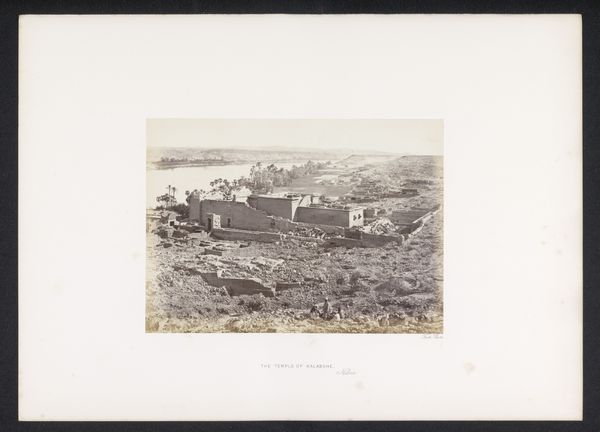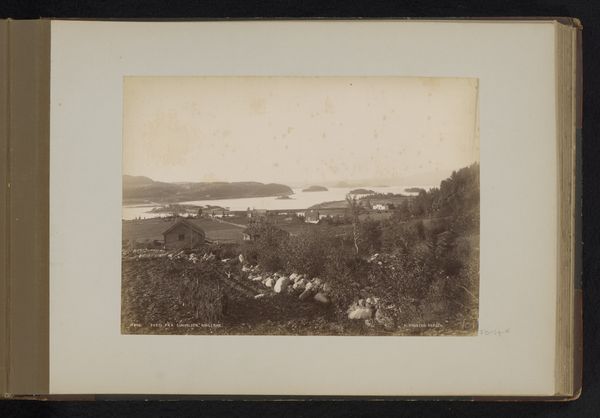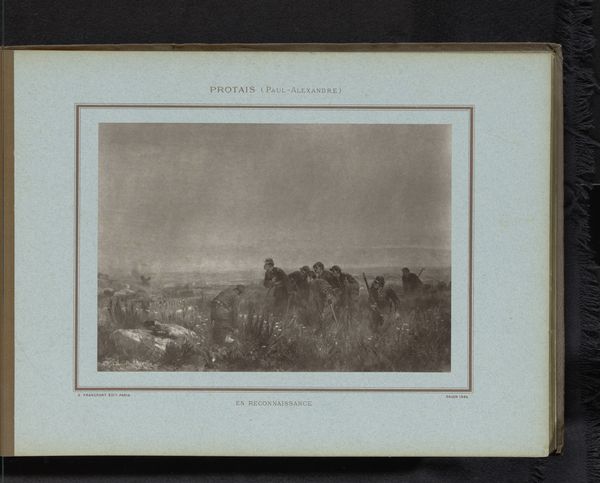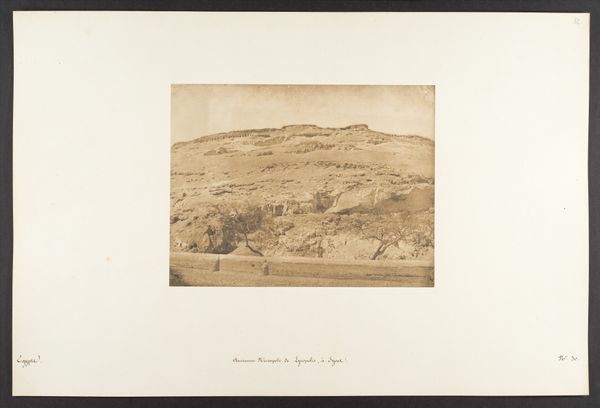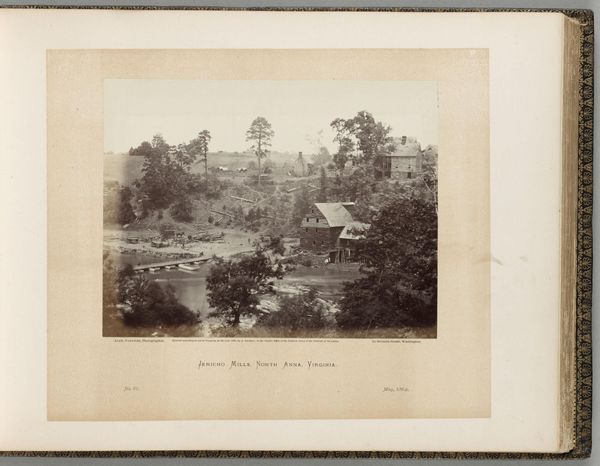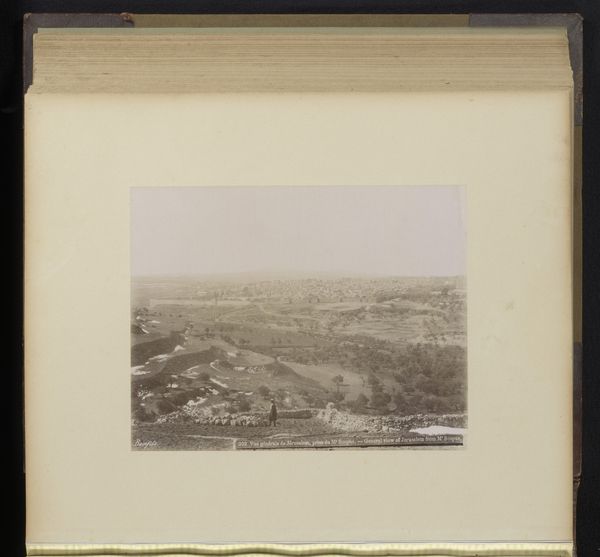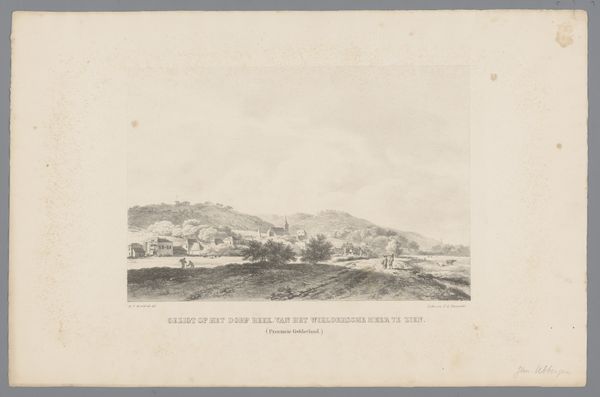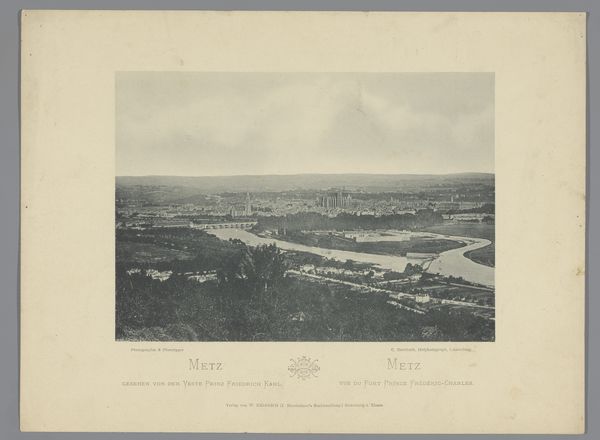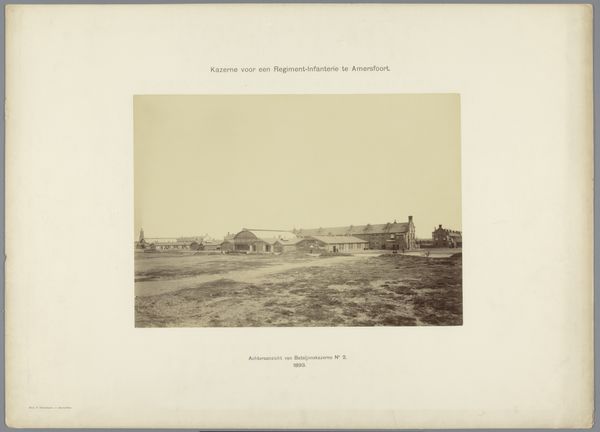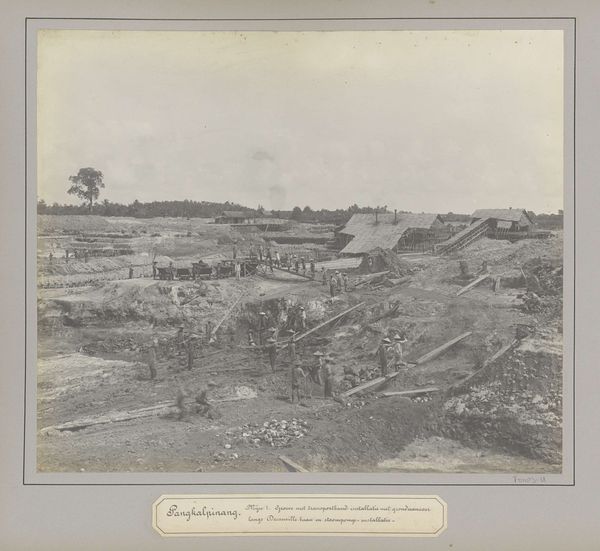
Dimensions: height 201 mm, width 253 mm
Copyright: Rijks Museum: Open Domain
Curator: So, what strikes you first about this image, this… ghostly glimpse of Stuttgart before 1875? Editor: An air of… melancholy? It’s beautiful, certainly, but something about the sepia tones and the sprawling vista speaks to a city on the cusp of irrevocable change. The unyielding urbanism contrasts the surrounding natural landscape. Curator: Change is inevitable, isn't it? This albumen print, credited to Georg Maria Eckert, captures more than just the geography of a place, I think. It hints at a specific moment in time, a collective mood perhaps. Like peering into someone's memory. It reminds me a bit of Caspar David Friedrich actually. Editor: Absolutely, Eckert presents us with the emergence of modernity and all the socio-economic changes that accompany it, and maybe that sense of melancholy I feel is a direct reaction to the displacement, class divisions, and early environmental crises of urbanization. Look at how the natural landscape has already been cleared for urban expansion. Curator: Cleared, cultivated… transformed, maybe? Though I understand what you mean. It feels less like celebration and more like documentation. I mean look, the city unfolds before us in layers, with what seems to be cultivated land sloping downwards in the foreground. Then beyond it, there it is: the nascent metropolis rising up in the middle distance towards the distant horizon. Editor: I appreciate that Eckert situated his camera on a hill—almost removed from the spectacle. The image offers a particular vision of German unification, industrial advancement, and a turn-of-the-century reckoning with identity, progress and place. Curator: Like they're both spectators. A dialogue through time. What kind of future were people thinking about in the late nineteenth century? It’s interesting what gets chosen and becomes remembered. We're creating new layers, aren’t we, with every conversation? Editor: Exactly. Every interaction is an added element to the photograph's interpretation, reflecting our present concerns and biases back at a past moment frozen in silver. It encourages questioning the direction that moment has sent us on. It's more urgent than melancholic I think. Curator: Okay, I like that framing—more urgent, absolutely! A challenge to make something better than the urbanized image displayed here. I feel ready to respond with more hope, somehow. Editor: Right. Images like these force us to contemplate not just where we've come from, but where we're going, and to consider whose stories are visible, and whose remain untold in this particular panorama of progress.
Comments
No comments
Be the first to comment and join the conversation on the ultimate creative platform.
